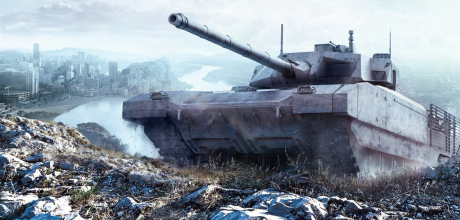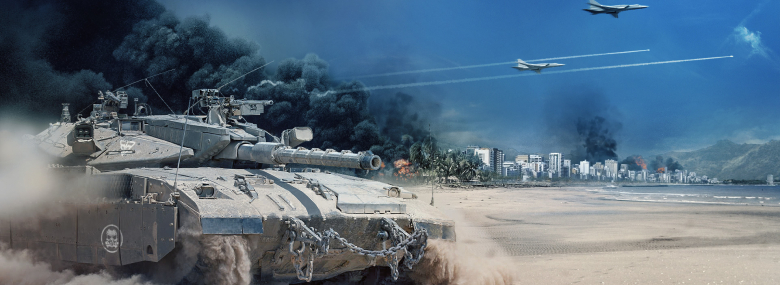
Commanders!
This month in our Branch of the Month series is dedicated to the British Main Battle Tank branch, available in Marat Shishkin’s vehicle pool.
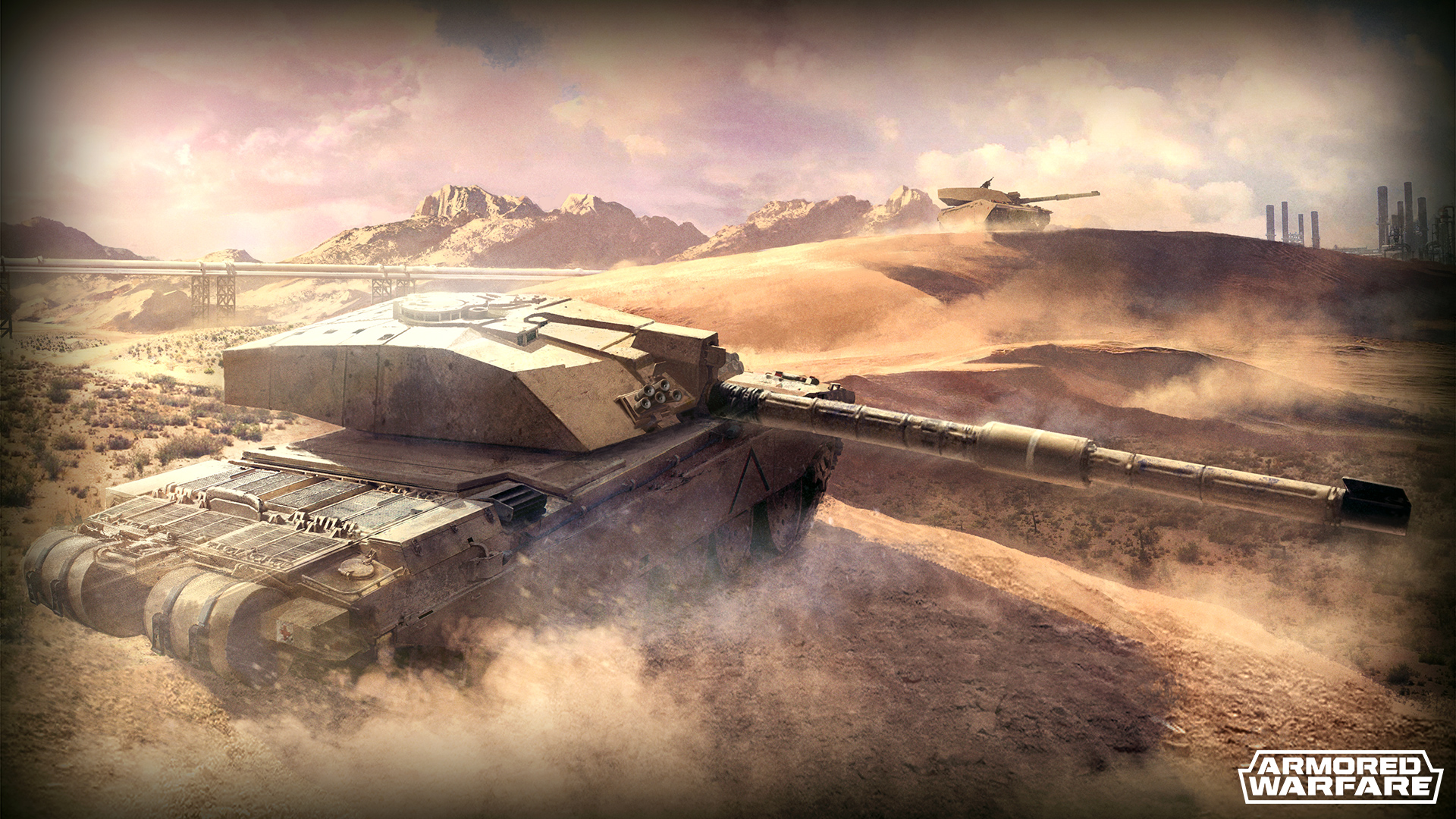
Even with its considerable successes in the field, Great Britain has always been the odd one out when it comes to armored vehicle development. From various interwar and wartime contraptions such as fire support tanks with howitzers that could only fire smoke shells to being the only user of a 120mm rifled cannon in NATO, the British always had to have something a bit extra – a strange thing indeed, considering the fact that Great Britain is the birthplace of tanks, even though it was the French who actually pioneered the classic turreted tank design.
That single early morning of September 15, 1916 changed the very nature of war forever and the development of tanks only continued from that point onward.
The interwar period saw rapid development of tank forces and the British played a major role in it. The interwar Vickers E light export tank was one of the most influential vehicles of its time for example with over ten thousand license-produced in Russia under the name T-26. Gradually, the British tanks got split into two distinct categories:
- Cruiser Tanks
- Infantry Tanks
The idea was for the light and fast cruiser tanks to accompany (or replace) cavalry in its exploitation of frontline openings while the infantry tanks – heavily armored and slow – would accompany, as their name suggests, infantry, shielding it with their thick skin and providing firepower. The reality of this nomenclature was, however, a bit more complex – you can read about it in a dedicated article.
At the onset of the Second World War, Britain found itself with rather unreliable or obsolete equipment and, despite the occasional excellent performance of the heavy Matilda infantry tanks during the French campaign, suffered heavy losses, including all of its tanks located in mainland Europe. These losses had to be replaced, preferably with something that would not suffer the same fate – and so has Britain joined the rapid tank development race of the war.
The cruiser tanks, found so vulnerable in France, would gradually become heavier and heavier, essentially becoming medium tanks in the process – the famous Crusader bore the brunt of the British fighting in the desert while the Cromwell and the excellent Comet would fight in Europe until the end of the war. The development of the infantry tank class continued as well with the Valentine becoming famous for its service in the Soviet Union under the terms of the Lend Lease contract.
The idea of slow but extremely heavily armored tanks lived on in the Churchill. Even though its early variant, captured by the Germans during the ill-fated Dieppe raid, was judged to be obsolete and poor-performing, the Churchill soldiered on until the end of the war as well, becoming famous for being able to climb to places other tanks could not.
But overall, the direction of the tank development at the end of the war was clear – tanks had to become more universal – mobile, well-armored and armed with a gun powerful enough to take out other such tanks. The Germans understood this and had their Panther, the Americans came near the end of the war with a rather universal tank called Pershing (that would spawn a successful line of the Patton tanks) and the Soviets had their T-44 and T-54 medium tanks. The British couldn’t afford to stay behind and their efforts resulted in one of the best tanks ever built, the Centurion (developed since 1943).

The Centurion was built from 1946 to 1962 and with around four thousand produced, it became one of the most important tanks of the early Cold War era. Ironically, it wasn’t as famous for its British service as it was for its performance in Israeli hands during the Yom Kippur War of 1973. The tank itself wasn’t stellar in any particular direction – it simply combined adequate steel armor (for its time), solid mobility and reliable firepower that was gradually upgraded from a post-war version of the 17pdr over the British 20pdr to its ultimate weapon, the Royal Ordnance 105mm L7.
The British L7 was one of the best guns ever built. It was used by the Germans, the Americans copied it and it basically became a standard NATO tank gun for several decades until finally being replaced by the German Rheinmetall 120mm smoothbore decades later. It is a testament to its quality that even though the L7 was introduced in the early 1960s, tanks armed with it are still widely used to this day.
Of course, the Centurion was never perfect and even in its early years, the British felt something a bit more powerful was needed to take out the fearsome Soviet IS-series (in particular the IS-3) that shocked the west during the post-war military parade in Berlin. In reality, these monsters posed a lesser threat than anyone expected but the sight of their sloped armor and massive guns convinced the British that they’d have to take them on with a really big gun, ideally at long distances. And so the heavy tank development in Britain did not die with the end of the war – instead, it resulted in a true IS-killer, the Conqueror Heavy Tank.
Armed with a 120mm L1 rifled cannon, the Conqueror would take on the Soviets before they’d be able to fire back – or so it was thought. In reality, it had a number of flaws but the British experts to this day believe that it would have done the job.
But, this still left the British with two tanks while the trend was clear – unification of different tank categories into one, the Main Battle Tank.
And that’s where the Chieftain came in. This British MBT was designed to replace both the Centurion and the Conqueror, packing the rifled 120mm firepower and heavy tank-level armor into a compact, MBT-sized package.
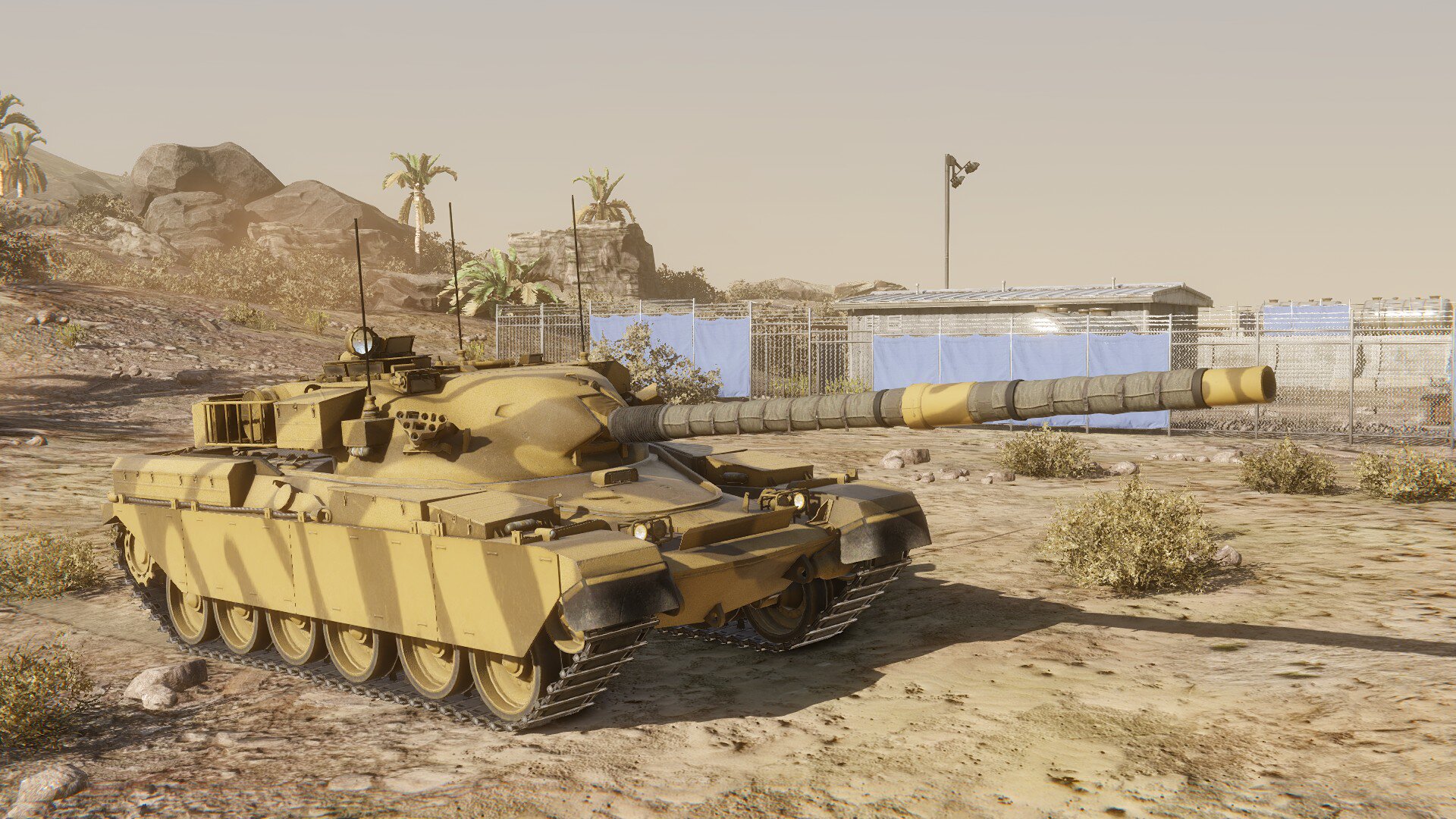
The development of the Chieftain was fraught with setbacks with the first models having a rather poor reputation for their low reliability and mobility due to its underpowered Leyland engine. However, the tank was gradually improved upon and remained in British service for thirty long years with the last ones being phased out in 1995. For more information about its development, please visit a dedicated article.
A first batch of the Chieftain tanks appeared in Germany in December 1962 (in the 5th Royal Tank Regiment) and these were tested in some of the worst conditions possible for a tank. These conditions revealed some of the flaws of the early Chieftains. Their off-road capability was poor, the tank was underpowered, the radioman was a busy crewmember indeed (he had to load the gun, load machineguns and operate the radio) and the electro-mechanical rammer was very unreliable. It was operated by a light sensor that had a tendency to activate whenever any shadow fell over it and the rammer activated spontaneously – an unsuspecting loader was in danger of losing an arm to this infernal device.
Some crews simply deactivated it and pushed the shell and charge forward manually (this later became standard after this procedure was proven safe by trials). The difficult three month trials also ended with a tragedy when one loader forgot to insert insulating inlays (obturator disks) into the breech in the heat of action. The gun backfired into the crew compartment, killing two crew members. This incident caused the gun to be modified so the gun could not be fired without the inlays.
The vehicle was officially approved for service on the 1st of May 1963 with the name Chieftain. Mass-production started slowly with only 40 Mk.1 tanks being made – all these served as training vehicles for the new vehicle crews. The first truly mass-produced version was the Mk.2, of which 532 were made – this version had an improved L60 650hp engine and the first 6 were used by the 11th Hussars in Germany.
It was at this point that the British started considering exporting the vehicle. One of the most interested potential buyers was the Israeli Defense Force. All went well – the "father of Israeli armor", General Israel Tal, who was later responsible for the Merkava development, preferred the heavily armored British designs over the French vehicles (naturally the opportunity to beat the French to the contract appealed to the British) and two Mk.2 Chieftains were transferred to Israel for trials in early 1967. Unfortunately, at this point the Six Day War started. The British, fearful of losing contracts in Arab countries, sent frenzied messages to Israel to move the Chieftains from the borders with Egypt. The now legendary laconic response from Israel was:
"Don't worry, we've moved the border".
Trials continued for a while after that and both the Israeli and the British learned many interesting things from them. Israel officially asked the British for the purchase and license production rights for the Chieftain on 17.10.1968. Unfortunately, at this point the British government was generally full of anti-Israel sentiments and officially denied the request. How "realistic" British foreign policy was at the time can be illustrated by the fact that the Chieftain was actually offered to Iran and Libya instead later on. The Americans were shown the Chieftain as well – they were not interested in the chassis but in the 120mm gun. Despite some favorable firing testing results, they later opted for the Rheinmetall smoothbore instead.
The Mk.3 version (with an improved L60 engine variant and new commander's cupola) was produced from 16.9.1969 with 199 older Mk.2 tanks rebuilt to Mk.3 standard as well. There were several variants of the Mk.3 (including an export one for Iran) but the main one was the Mk.5. The Mk.5 Chieftain was powered by an improved 750hp L60 variant. With its 54.8 tons, it had a power-to-weight ratio of 13,8 hp/t. It was also armed with the new 120mm L11A5 gun version. The first Mk.5s were produced in 1972 and there was a whole series of sub-variants (such as the Mk.5/3 with a new and improved fire control system). From the Mk.5/5 variant onwards the gun could fire new extremely powerful APFSDS shots as well.
The Mk.5 was also exported – a modified version called Shir with a 1200hp Condor CV-12TCA engine was sold to Iran (Iran bought a total of 707 Chieftains of various versions) and in 1976 Kuwait bought 165 Mk.5/2 Chieftains. Some leftover Shirs from the Iran program (some were not delivered due to the Iranian revolution) were delivered to Jordan in 1979 (274 in total). These had 1200hp Condor engines, new TN-37 transmissions and Marconi fire control systems – they were also a bit longer. The Jordanians named this variant Khalid and used it from 1981. The last foreign Chieftain user was Oman with 27 Chieftains delivered in 1984-1985.
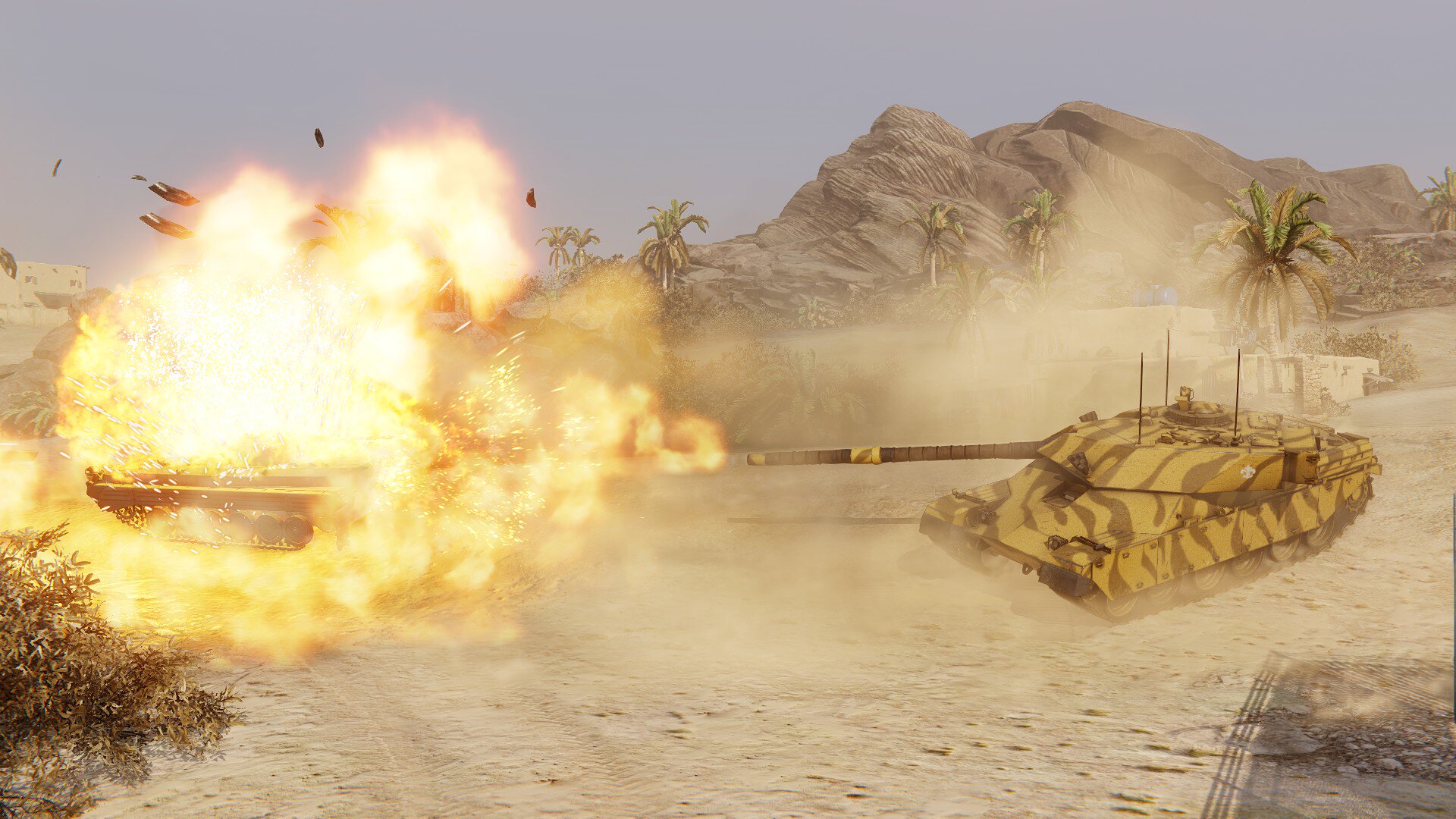
Although designed to fight the Soviets, the Chieftains luckily never fired a shot in anger in Europe. The first real combat use took place during the Iran-Iraq war but the results were unconvincing: the Iranian and Iraqi crews were both poorly trained and misused their vehicles. It was, however, discovered that the T-62 could under certain conditions penetrate the Chieftain armor. Around 50 Chieftains were captured by Iraq and later given by Saddam Hussein to the Kingdom of Jordan as a gift – an unwelcome one as the Jordanians did their utmost to at least appear neutral in the conflict (and they had placed their own order for Chieftains). In the end these "gifts" were used for spare parts for the Jordanian Khalid version. The last combat use of the Chieftains was likely the Kuwait defense against the Iraqi T-72 tanks during the 1991 invasion, in which the Chieftains fared well against the Soviet vehicles and scored numerous hits at long range.
Eventually, even the Chieftain grew obsolete, which brings us to the Challenger 1 and Challenger 2 MBTs.
Challenger 1 had its roots in the improved Chieftain (known as Shir) production run for Iran – as a result of the Iranian revolution and the fall of Shah Reza Pahlavi, the British military became the lead customer and it was from these origins that the Challenger was eventually developed. Featuring a 120mm rifled gun, the Challenger 1 was an excellent Main Battle Tank but Vickers felt it could be further improved and began to develop its successor while the Challenger 1 production run was still underway.
The history behind its name is rather interesting as well – there had already been a vehicle named “Challenger” in service – it was a mass-produced 17 pounder gun World War Two tank destroyer and a rather successful design, yet all this seems to have been forgotten and the name was re-used based on a British army vehicle naming contest.
Work on the new tank began in 1986 and even though it shared its name and roots with its predecessor, it featured so many improvements that it was an entirely new tank.
One of the major changes was the addition of second generation “Dorchester” composite armor. Thanks to this upgrade the Challenger 2 is widely believed to be one of the best protected main battle tanks in the world and no Challenger 2 has ever been lost in combat against enemy armor.
The armament was upgraded as well with the 120mm L30A1 rifled cannon being the weapon of choice. The Challenger 2 is one of the few last generation battle tanks still using rifled cannon due to the wide use of squash head ammunition by the British army. It can carry 52 rounds of three-piece ammunition (the charge, the primer and the shell are loaded separately). Apart from the abovementioned squash head rounds (commonly known as HESH), the Challenger 2 can also fire depleted uranium rounds (the L27A1 APFSDS) and White Phosphorus shells to create smoke cover.
There have been several attempts to propose switching this weapon to the classic NATO 120mm smoothbore by Rheinmetall, but so far the British have resisted all of them. The “CLIP” program was developed with this change in mind. The idea behind it was to save money on logistics through the unification of ammunition with other NATO countries that use 120mm rounds. The problem with this solution is that because the original gun uses three-piece ammunition, the turret would require an extensive overhaul due to a lack of space inside. Given the very high cost of such an overhaul, the program was cancelled. The vehicle is powered by a 1200 horsepower Perkins CV12 26 liter diesel engine and it can reach a top speed of 59 kilometers per hour. While not the fastest tank out there, the Challenger 2 is no slouch and it can accelerate well, despite its weight of roughly 62 tons.
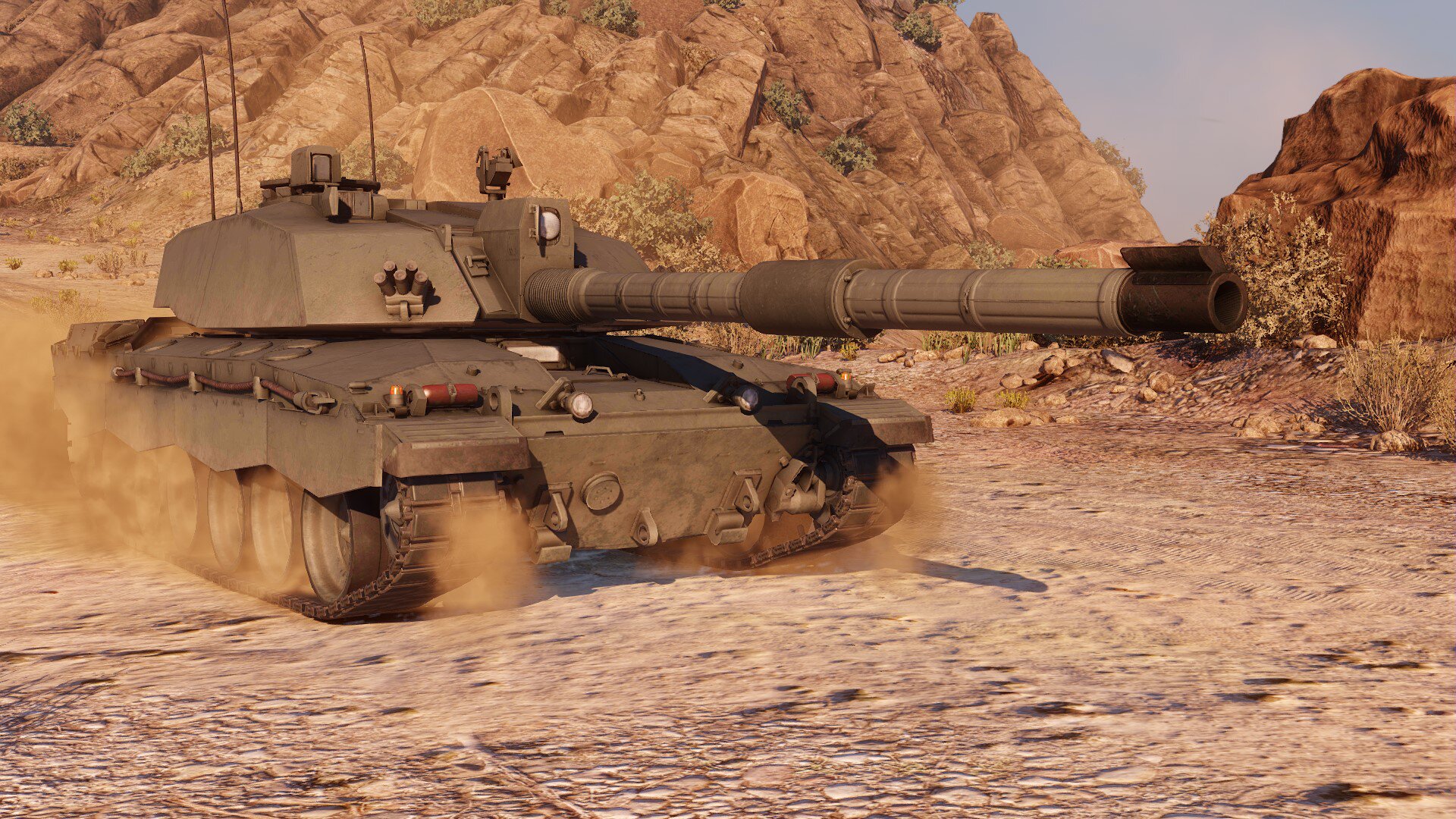
Based on successful trials, the British Ministry of Defense placed an order for the Challenger 2 in 1991 and over 400 were built between 1993 and 2002. In the late 90s, the Challenger 2 completely replaced the Challenger 1 in British service. Challenger 2 tanks participated in the 2003 war in Iraq, where they fared very well – in fact, it was there that they gained their reputation for being practically impenetrable. In one incident near Basra, one Challenger 2 was hit by Soviet-made RPGs around 70 times and still survived. Damaged Challenger 2s were either the result of improvised explosive devices (roadside bombs but also rigged heat charges) and in one instance a Challenger 2 was lost to friendly fire.
Around two hundred Challenger 2s are still in service and will likely continue to be for at least the next two decades thanks to several proposed upgrade programs, the best-known of which is the recent Life Extension Program, or “LEP”. Despite being relatively successful, the Challenger 2 was quite an expensive program and with the threat of the Soviet Union gone, few reasons remained to continue independent tank development in Britain and it is therefore possible that the Challenger 2 will be the last Main Battle Tank to be developed in Britain.
From March 1 to March 31, 2018, the following British MBTs will be available for lower price than usual:
Chieftain Mk.2 Tier 4 MBT – this was the first truly mass-produced early variant of the Chieftain MBT with around 500 built from the early 1960s. Featuring thick steel armor and a 120mm rifled gun, it was a powerful, if slow, battle tank. Two of these tanks were tested by the Israelis but the deal collapsed following the rise of anti-Israeli sentiments in Britain.
- Discount: 35%

Chieftain Mk.10 Tier 5 MBT – the Chieftain Mk.10 was one of the last production variants, featuring additional “Stillbrew” armor to keep it relevant on the modern battlefield. It’s a tough, rugged, vehicle capable of withstanding a lot of punishment, especially when it comes to its turret. The ability to fire HESH shells makes it extremely destructive but its mobility is just mediocre.
- Discount: 35%
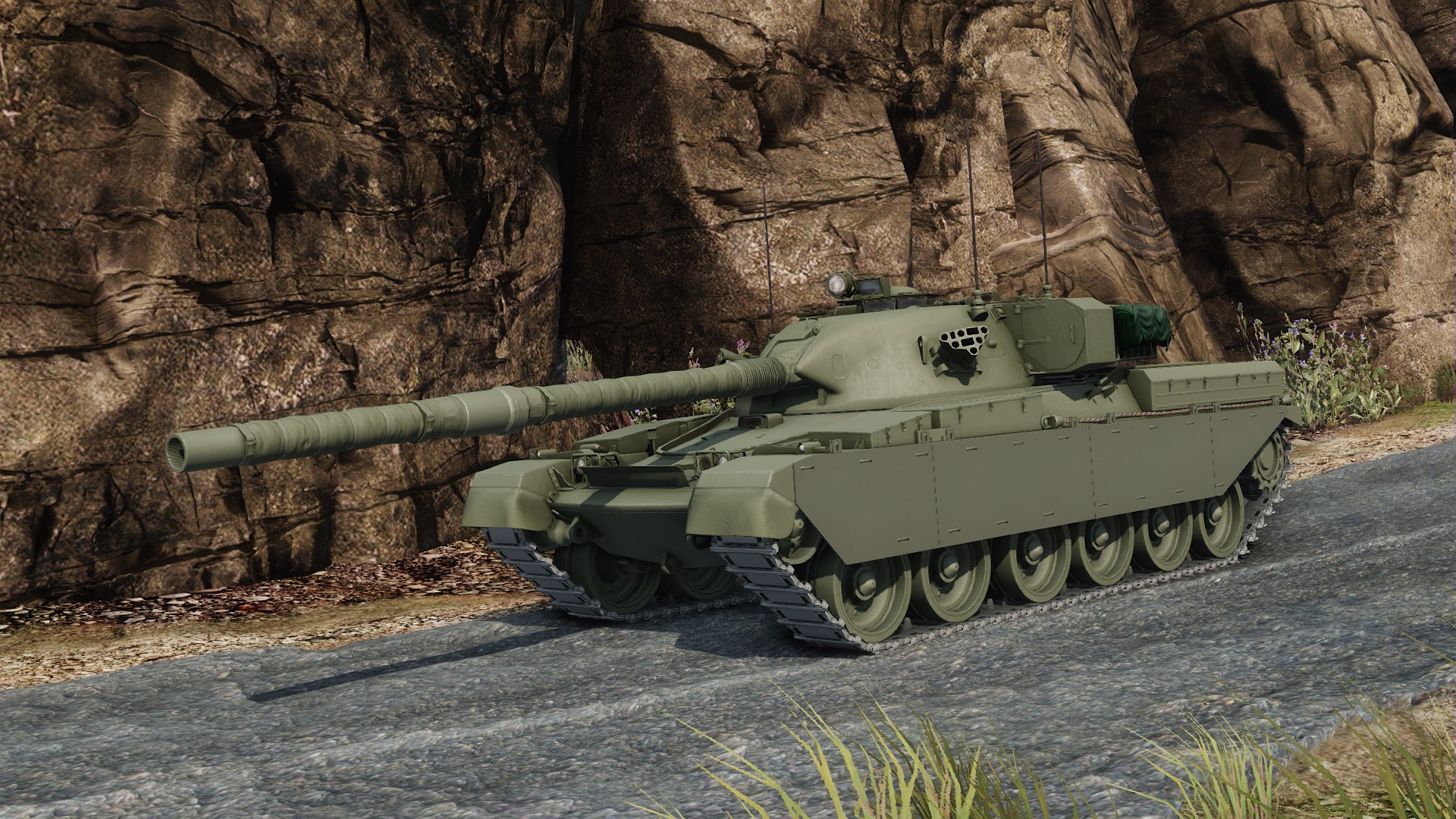
Chieftain 900 Tier 6 MBT – this was essentially a Chieftain upgraded with Chobham composite armor, built by Vickers on a chassis of an ex-Iranian order Mk.5 Chieftain. The purpose of this configuration was to attract foreign buyers but, unfortunately, it failed to do so. Two prototypes were built. One of the two prototypes is currently owned by the Bovington Tank Museum, the other ended up as a practice target on the firing ranges of the Royal Armoured Corps Gunnery School in Lulworth. You can read more about it in our dedicated article.
- Discount: 35%

Challenger 1 Tier 7 MBT – this MBT has always been a rather unique vehicle amongst the NATO forces. For one, it kept a rifled 120mm cannon when the rest of NATO switched to 120mm smoothbore shells. On the battlefield, however, it has proven to be a tough vehicle, completely outclassing its Soviet era opponents during Operation Desert Storm. In Armored Warfare , it is one of the toughest vehicles of its tier. Its thick armor allows it to shrug off most hits while the 120mm rifled cannon is more than capable of dealing punishment on its own. The Challenger 1 is ideal for players who like to enter the thickest fights head on, advancing relentlessly through hailstorms of shells.
- Discount: 25%
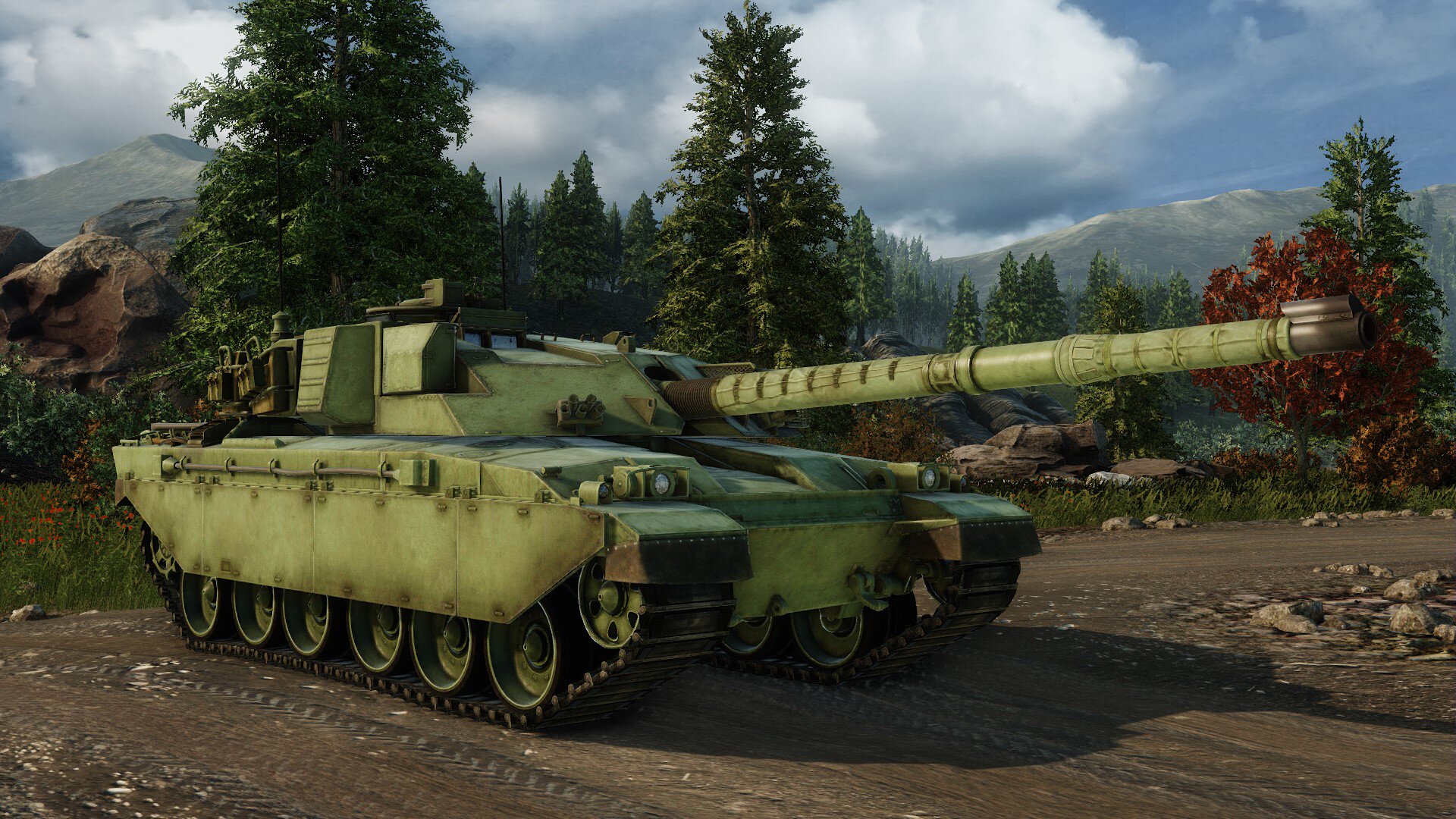
Ariete Tier 8 MBT – this is an Italian modern Main Battle Tank. While powerful, it does not really belong to the British branch and is scheduled to be moved to a different line and replaced in 2018 by another high-Tier tank, this time of British origin. Unlike the British tanks, the Ariete is much lighter and mobile, making it an outlier in this line and more akin to the upcoming French MBTs. You can read more about it in our dedicated article.
- Discount: 25%
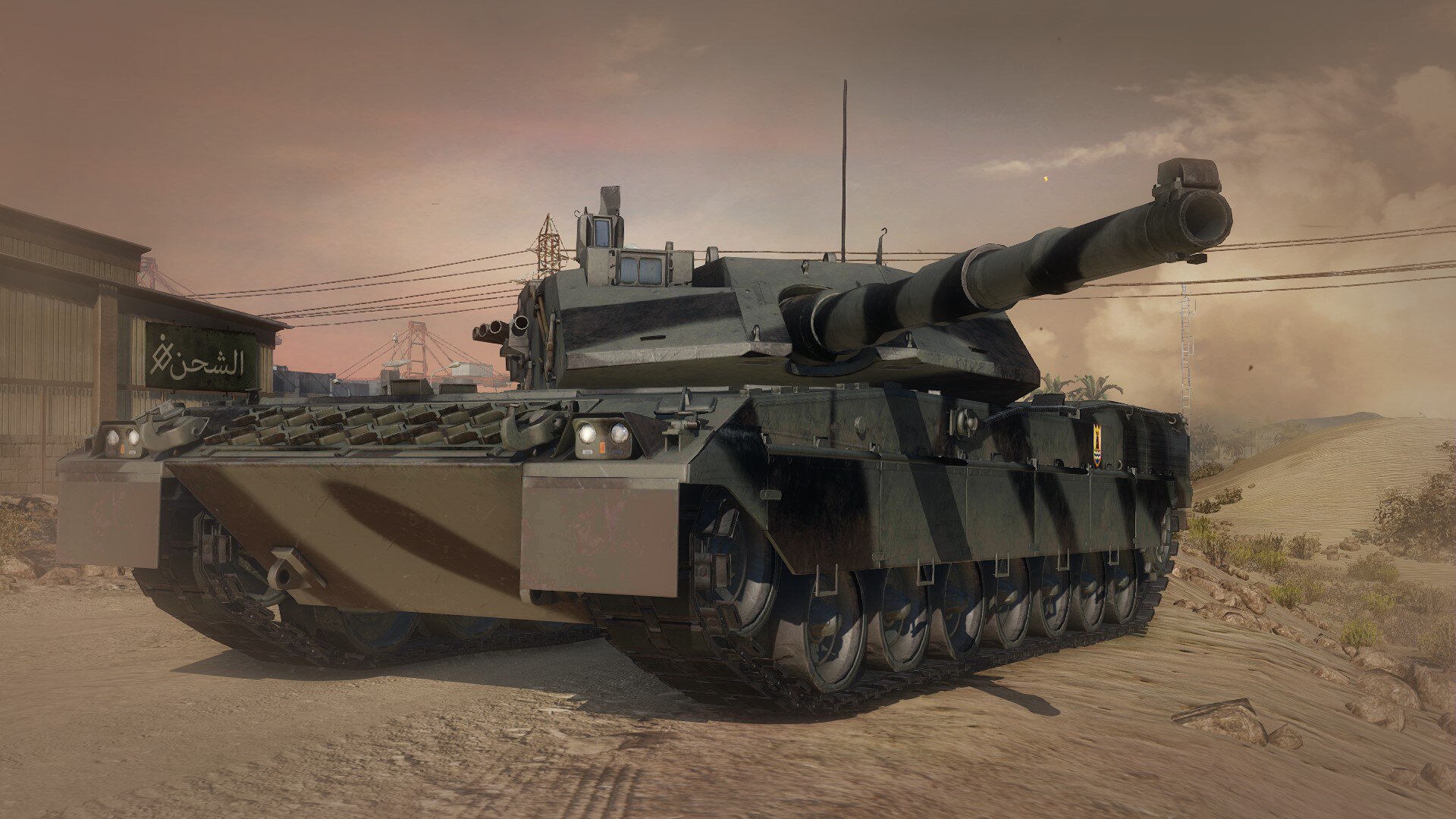
Challenger 2 Tier 9 MBT – the pride of the British tank forces, the Challenger 2 is just as tough as its Tier 7 predecessor. It can be considered a British tank archetype, fully suitable for the intended play style described below. With a number of planned improvements, it’s expected to serve for a few more decades.
- Discount: 20%
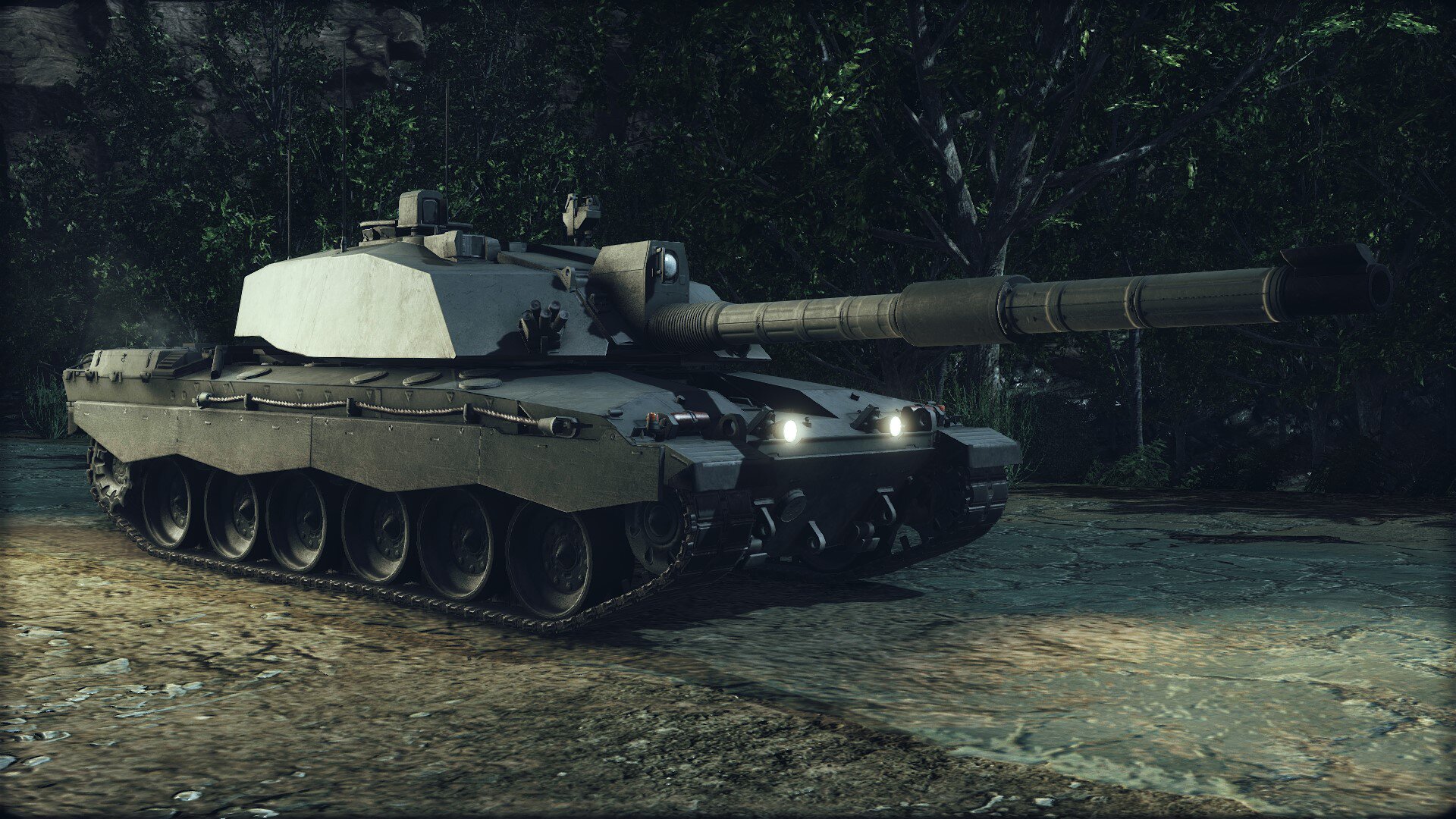
Challenger 2 ATDU Tier 10 MBT – the ATDU stands for Armoured Trials and Development Unit – a research center in Britain, using a Challenger 2 vehicle (often referred to as “Megatron”) to test experimental technologies. In Armored Warfare, the Tier 10 Challenger 2 ATDU includes several experimental components to improve its performance beyond the Tier 9 variant.
- Discount: 15%
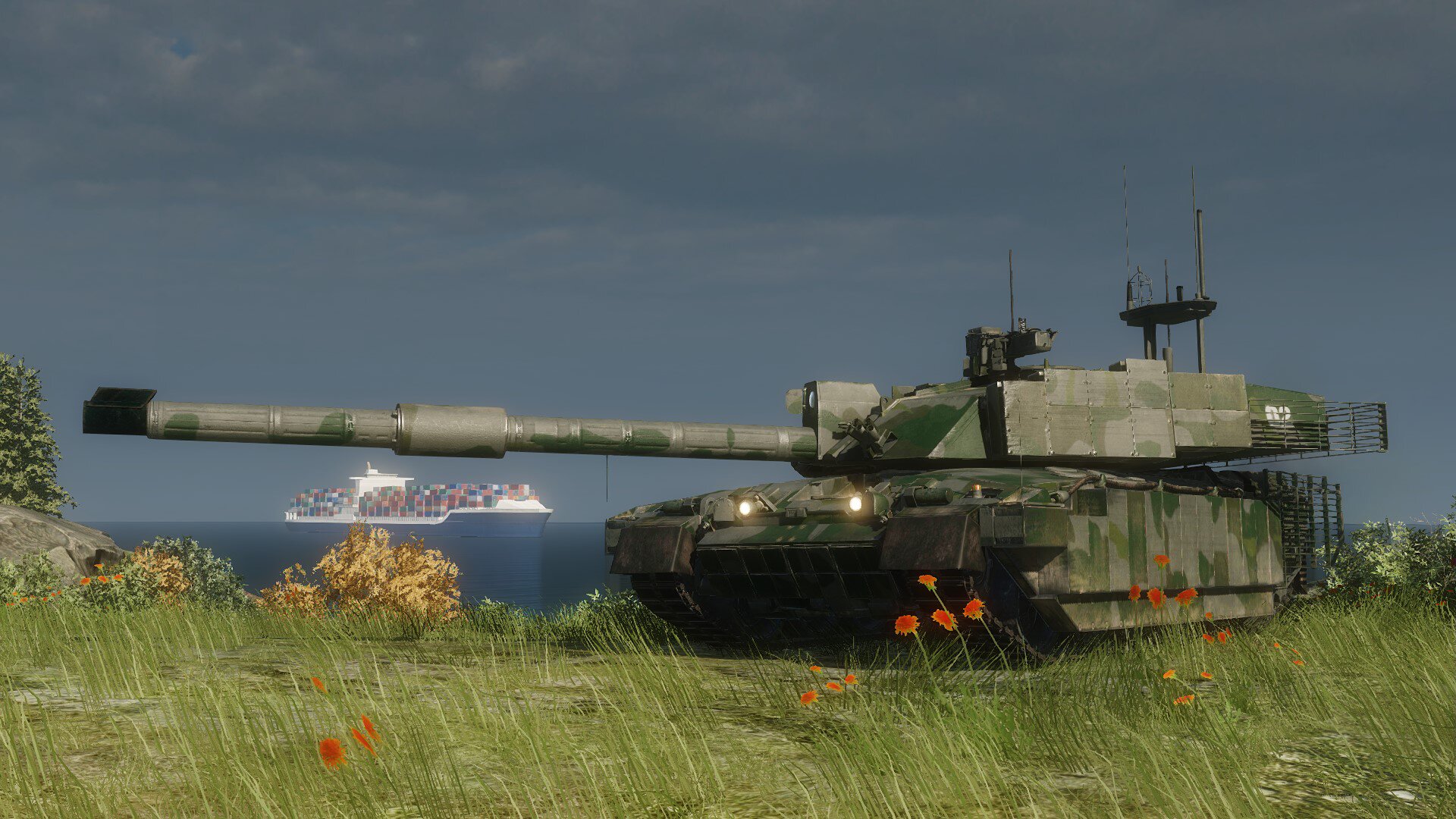
Play style-wise, where the Americans are jacks-of-all-trades, the Russians are brawlers and the Germans are snipers, the British vehicles rely on two things – HESH ammunition and armor. The British MBTs are invariably slow and sluggish and are better at taking punches than avoiding them. The low-Tier Chieftains offer solid turret protection but their hulls are generally vulnerable. The Challengers, however, are a different story entirely – they can resist many types of shells and while they do have a number of weakspots, their thick hide routinely saves them even in the thickest fighting and allows them to survive scraps that would leave other tanks smoking wrecks.
As the only nation that stuck to the 120mm rifled guns, the British have special access to ammunition that tears even the thickest armor apart – the High-Explosive Squash Head rounds. This ammunition was developed to defeat Soviet tanks with sloped armor and is brutally effective against well-angled frontal plates typical for Russian design composite armor plates. This allows the Chieftains and Challengers to fight off their Russian counterparts comfortably despite their mediocre mobility.
While having a tough hide might seem like a no-brainer for successful gameplay, the mediocre mobility and generally poor firepower of the 120mm rifled guns make the British vehicles more suitable for experienced players. The British MBTs are not suited for fast maneuvering and have to rely on some elementary player coordination to succeed – even though they are able to mount spirited and unyielding defense, without support they will eventually get outflanked and overrun.
We’ll see you on the battlefield!





